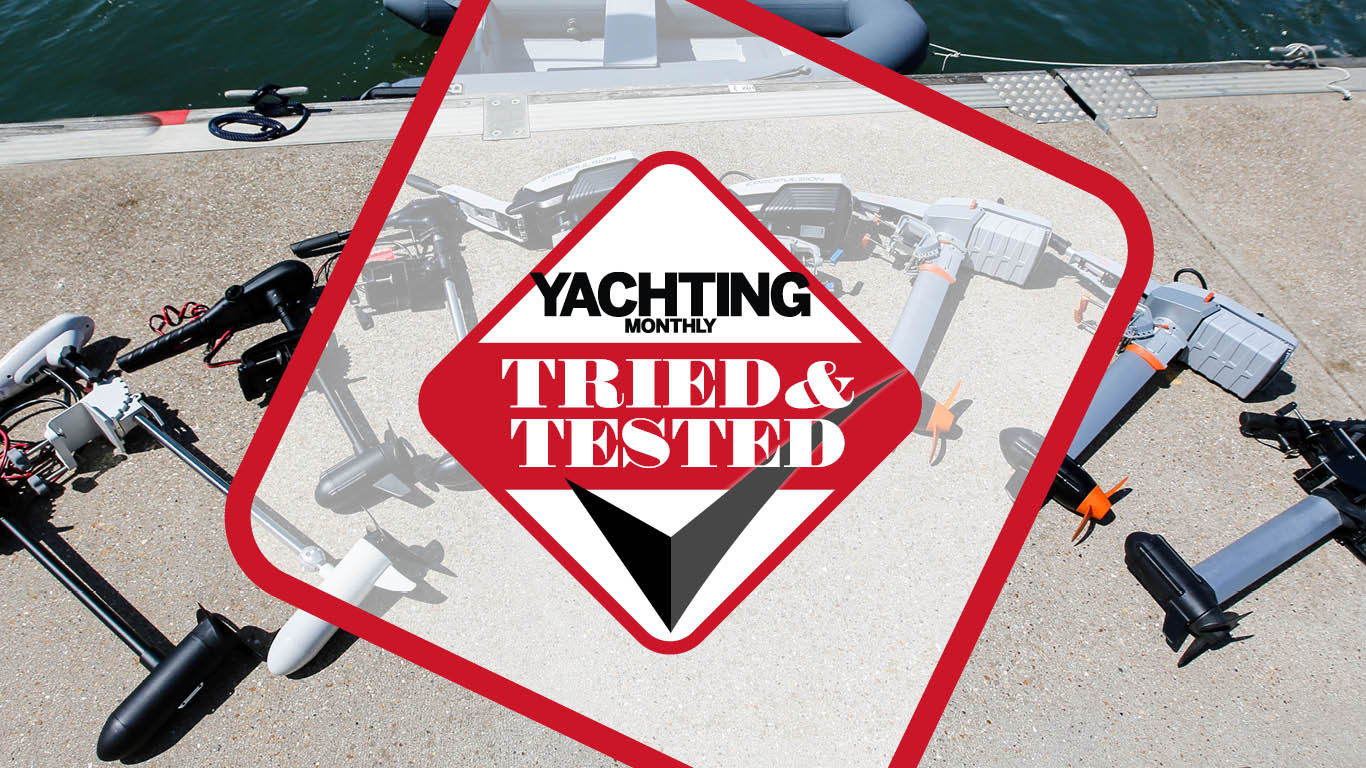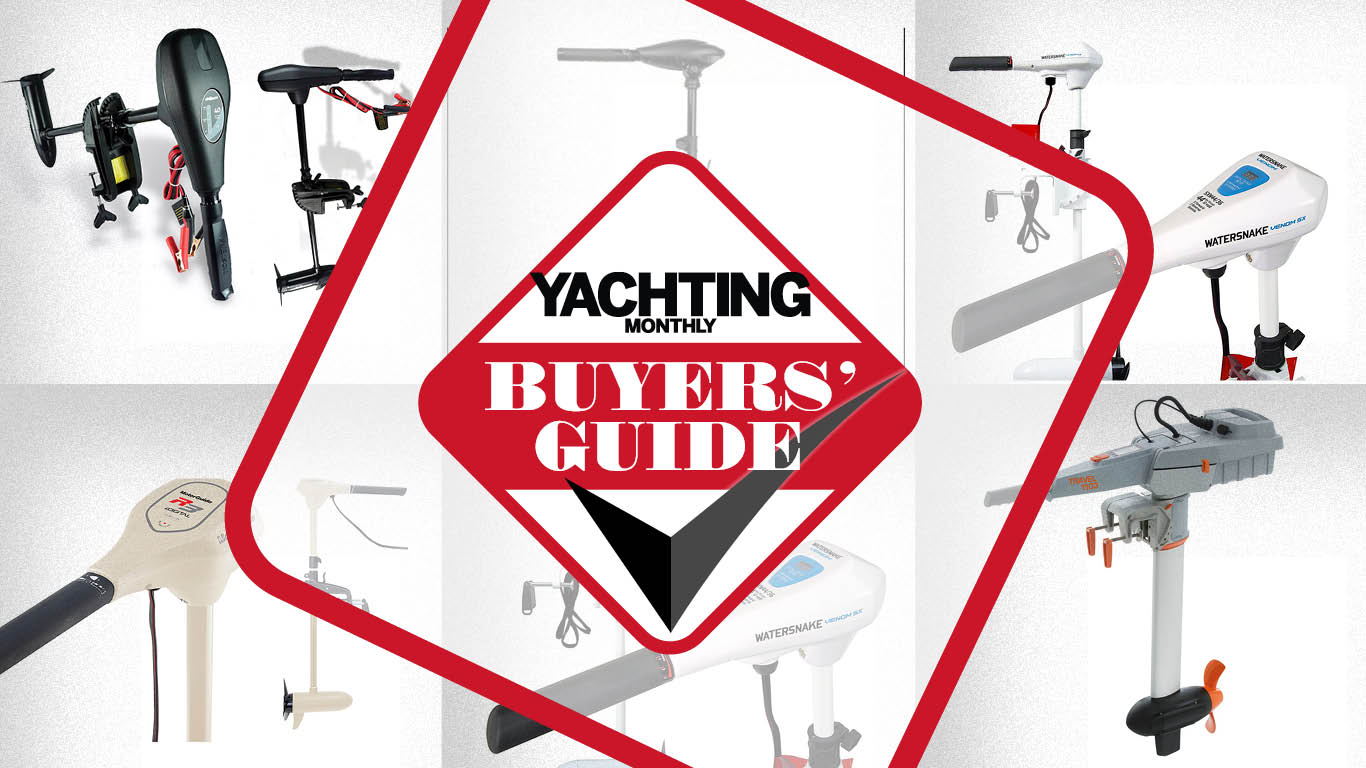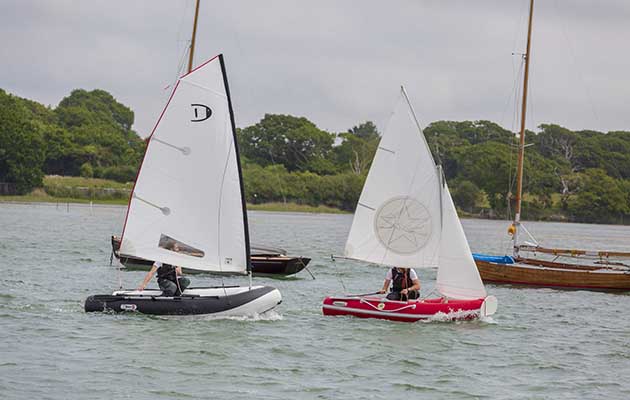All sailors who use dinghies come across challenges such as the contortions required to get a dinghy outboard onto the transom. Rachael Sprot shares her advice and top tips
Outboards have changed dramatically over the past decade.
Most yachts prioritise ease of handling and stowage over performance and range, which has led to a steady uptake in electric engines, but prop wraps and heavy transfers are still an issue.
Loss of power, for whatever reason, is equally to be avoided.

A dedicated outboard lift makes life easier. Credit: Miranda Delmar Morgan
Some sailors use a trolling motor with a stand-alone battery.
The system keeps the boat well-balanced as the heavy battery could sit in the bow, but it can be vulnerable to water ingress.
An engine with a sealed battery pack would require less vigilance.
Lifting a dinghy outboard
Transferring the outboard to the tender is a precarious process, but easier with an electric motor where the battery can be separated.
An outboard lifting harness or dedicated lifting arm such as the Forespar Nova Lift, gives purchase power and security for bigger engines.
Two fit crew might find manually passing a small outboard with a safety lanyard is quicker and easier.

A harness around the dinghy outboard will make it easier to lower vertically. Credit: Rachael Sprot
Secure the dinghy alongside with the transom under the engine lift point and make sure that the person on the boat is strong enough to lower the weight all the way to the dinghy.
The person in the dinghy shouldn’t do much weight bearing as they have a much less stable surface to work on.
They just need to kneel in the transom and guide it into place. This process is much easier on a modern electric outboard where the heavy battery can be handled separately to the awkward motor and shaft.
Before lifting any engine, open the clamp pad screws fully. This makes it easier to locate onto the bracket.
Starting the outboard
Familiarise yourself with the controls before starting – the throttle, gear lever, engine tilt, steering lock and stop button.
Be sparing with the choke or you may flood the engine.

Check the telltale is working on water-cooled engines to avoid overheating. Credit: William Payne
Check for the water tell-tale once the engine’s running.
In a small boat, it’s worth starting the engine before the crew get in to avoid the classic elbow-to-face during energetic pulling of the start cord.
Handling a dinghy outboard
Handling characteristics vary considerably depending on how powerful the engine is and how many people are in it.
Without a keel or ballast dinghies rely on form stability and crew positioning to stay upright so arrange weight carefully.
Leeway is inevitable and must be taken into account when setting off.

Use the kill cord around your leg. Credit: Miranda Delmar Morgan
Small petrol engines and electric outboard motors lack the oomph to compete with a headwind or strong current, so aim for an uptide or upwind landing point.
In recent years there have been several tragic accidents involving fast RIBs.
Most yachts don’t carry powerful outboards, but if speed’s your thing it’s essential to get some training.
Continues below…
Electric outboard motor: we test 13 options
The electric outboard motor has been around for many years, but they have either been too low powered or their…
Best trolling motors: 8 electric outboard alternatives
So you’re looking for an electric outboard to whizz your RIB around the harbour. Who wouldn’t want a fancy Torqeedo…
Best trolling motor batteries: 6 options for electric propulsion
You can’t beat a good day’s trolling, (on a boat, that is, not the web), unless, of course, your trolling…
Best portable sailing dinghies for under £5k
We put six inflatable sailing dinghies under £5,000 to the test to see which one is the best all-rounder and…
Some lessons are relevant whatever vessel you’re in, and one of them is the importance of the kill cord.
Wear it around your leg to prevent it slipping off and replace them if they’re stretched.
Solving engine issues
Common problems include running out of fuel or battery power; contaminated fuel; old fuel; propeller wraps and dirty spark plugs.
Basic engine checks and routine servicing is just as important as it is on your main engine but is often overlooked.

Know how to clean a spark plug, and carry the tools to do so. Credit: Matthew Sheehan
An annual service and fuel replacement will improve reliability.
Give some thought to petrol stowage.
Cockpit lockers may vent into the accommodation areas.

Servicing your outboard yourself isn’t hard and will help when you have to fix it away from shoreside services. Credit: Matthew Sheehan
Storing it in the anchor well or on deck may be better, but in hot weather direct sunlight will cause expansion and the container will need venting.
Commercial regulations stipulate that it should be stowed in an easily jettisonable location in case of a fire.
Tips for using a dinghy outboard
- Test in benign conditions
- Start up before crew enter the dinghy to prevent injuries
- Know how to change the fuel filters and spark plugs and carry spares when exploring
- Keep hold of the painter or tie it off to avoid a prop wrap
- Lash the engine on with a security lanyard, don’t rely on the clamp pads as they can fail. Tie the clamp pads together for long journeys
- Take the RYA Powerboat Level 2 course to gain essential skills for RIB driving
Enjoyed reading this?
A subscription to Yachting Monthly magazine costs around 40% less than the cover price.
Print and digital editions are available through Magazines Direct – where you can also find the latest deals.
YM is packed with information to help you get the most from your time on the water.
-
-
- Take your seamanship to the next level with tips, advice and skills from our experts
- Impartial in-depth reviews of the latest yachts and equipment
- Cruising guides to help you reach those dream destinations
-
Follow us on Facebook, Twitter and Instagram.








